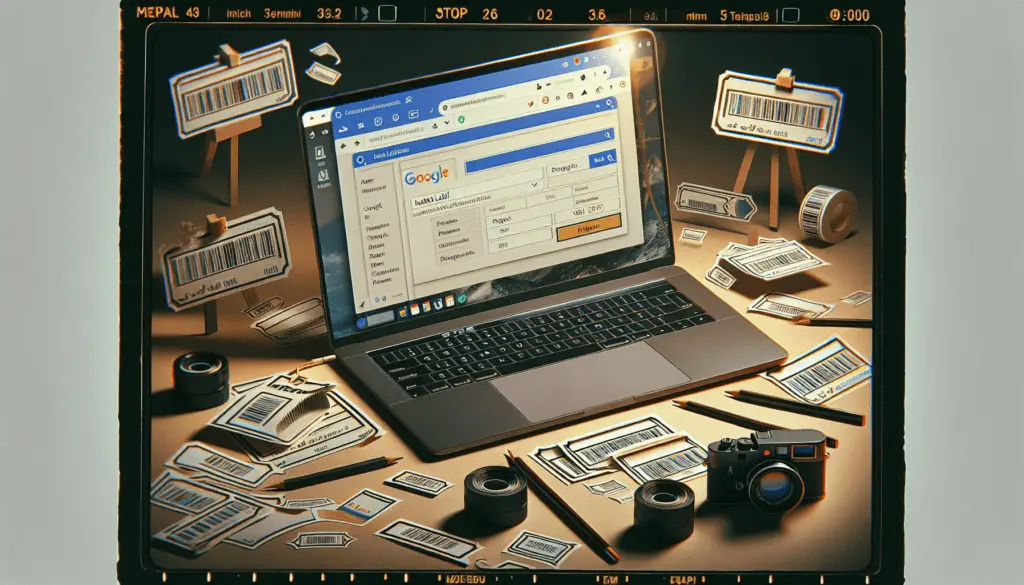Do you need to print labels for envelopes, packages, or other uses directly from Google Docs? Printing labels can be a tedious task, but Google Docs actually makes it simple once you know the steps. In this guide, I’ll walk you through the entire process of creating and printing labels of any size in Google Docs with just a few clicks.
Why Use Google Docs for Labels?
Google Docs is a convenient free tool that most people already use for documents. Unlike label-specific software, Docs allows you to create labels alongside letters, invoices, and other content without switching between programs.
Some key reasons to use Google Docs for labels include:
- No extra software or costs – Docs is free and works in any web browser. There’s no software to install or subscription fees.
- Cloud access from anywhere – Your labels are stored in the cloud, so you can print from any device.
- Easy collaboration – Share your label template with others to collaborate or print.
- Flexibility – Easily customize label dimensions, layouts, fonts, etc.
- Integrates addresses from Contacts – Pull contact info from your Google account.
Essentially, Google Docs provides an easy way to make labels that fits into your existing workflows.
Step 1: Set Up Your Label Template
To start, open a blank Google Doc. You’ll first set up a template with the correct label dimensions and layout.
To adjust label size:
- Click File > Page setup
- Change the Paper size dropdown to Custom size
- Input your desired label Width and Height
- Click Apply
For example, common Avery labels sizes are 2″ x 4″ or 1.5″ x 3″. But you can input any dimensions needed for your specific labels.
Next, adjust the page margins to match your label sheet margins:
- Click File > Page setup again
- Change the Margins to match your label sheet
- Click Apply
If you don’t know the margins, make your best guess or leave some small margin like 0.25 inches.
To finish setting up the template:
- Use Table > Insert Table to insert a table with rows/columns to match labels on the sheet
- Select the entire table and change alignment, fonts, etc.
- Add placeholder text or actual addresses into the table cells
Make sure the table fits the page size precisely with no extra space. Also check that margins align the table properly on the page.
Here is an example template:
Label Template Example
Feel free to share this doc with others if needed to collaborate on your list of addresses.
Step 2: Add and Format Contact Addresses
Now you can start populating your label template with actual contact addresses.
To quickly add contacts:
- Click Tools > Contacts from the Docs menu
- Select the checkbox next to each contact to add
- Click Insert to add rows with their info into the label table
Alternatively, you can type addresses directly into the table.
Once your contacts are added, take a minute to:
- Delete any unneeded columns so only the relevant address info remains
- Reformat text as needed for your labels – adjust fonts, sizes, alignment, etc.
- Add logos or images if desired in some table cells
The goal is to craft a visually appealing label layout optimized for your sheet.
Step 3: Print Your Labels
When your template is ready and filled with addresses, you’re ready to print!
First, click File > Print, then:
- Change the Destination to your label printer
- Change Copies to print multiple sheets if needed
- Enable Collate so pages print in order
- Click Print
And that’s it! Google Docs will automatically print your sheet of labels.
If anything looks aligned incorrectly on the printed labels:
- Double check your page size, margins, and table fit the label sheet properly
- Try slightly adjusting those settings and printing a test page
Tips for Great Looking Labels
Here are some additional tips for creating professional, eye-catching labels in Google Docs:
- Use color backgrounds or borders in the table cells to make text stand out
- Experiment with fonts and sizes to find an appealing look
- Add images or logos to brand your labels
- Align text to the left, right, or centered depending on the label layout
- Print a small test sheet first before your whole job to check alignment
With some creative formatting, you can design labels in Docs that rival expensive printing software.
Conclusion
I hope this guide covered everything you need to know to easily create and print labels of all types using Google Docs. The key steps are setting up a custom template, populating a table with addresses, then printing to your label sheets.





